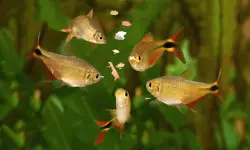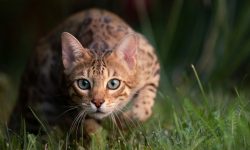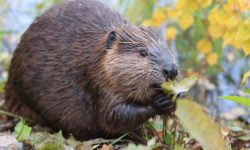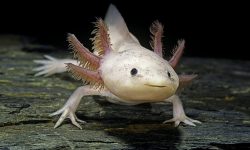Dragonflies are among nature’s most mesmerizing hunters. With their jewel-toned wings, powerful flight, and lightning-fast reflexes, these insects have ruled the skies above ponds, lakes, and marshes for over 300 million years. But beyond their beauty, dragonflies are fearsome predators. They don’t just fly gracefully — they hunt with unmatched precision and speed.
So, what do dragonflies eat? These agile aerial acrobats consume an astonishing variety of prey, from mosquitoes and flies to smaller dragonflies and even tadpoles. They play an essential role in keeping insect populations balanced and ecosystems healthy.
In this detailed guide, you’ll discover 20 tiny creatures dragonflies love to hunt, how they catch them, and why they are considered one of the most efficient hunters in the animal kingdom.
Understanding the Dragonfly Diet
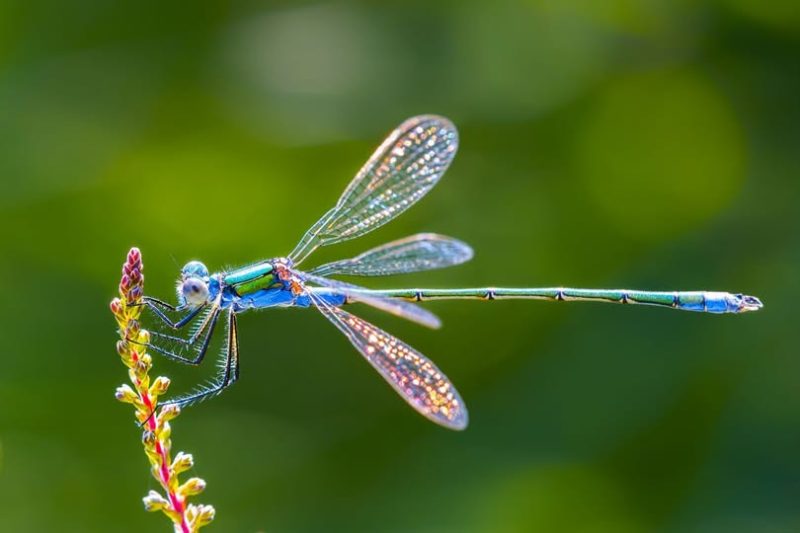
Dragonflies are strict carnivores, meaning they feed exclusively on other living creatures. Both adult dragonflies and their aquatic larvae (called nymphs) are predators, though they hunt in different habitats — adults in the air, nymphs underwater.
Key Traits That Make Dragonflies Exceptional Hunters:
- Unmatched eyesight: Their compound eyes contain up to 30,000 lenses, giving them nearly 360-degree vision.
- Incredible flight control: Dragonflies can hover, fly backward, and change direction instantly, allowing them to chase and ambush prey.
- Powerful jaws: Once they catch their victim, serrated mandibles tear through their prey efficiently.
An adult dragonfly can eat hundreds of insects a day, making them vital natural pest controllers. Now, let’s explore the 20 fascinating prey species they target most often.
20 Tiny Creatures Dragonflies Love to Hunt
1. Mosquitoes
Dragonflies are often called “mosquito hawks” for good reason — they can devour up to 100 mosquitoes per day! Their speed and agility make them unmatched mosquito predators.
Both adult dragonflies and their aquatic larvae eat mosquitoes at different life stages. While nymphs hunt mosquito larvae underwater, adults catch them midair, keeping mosquito populations under control naturally.
2. Flies
Flies are another favorite target. Dragonflies patrol areas near water or livestock where flies are abundant. Their keen eyesight allows them to lock onto a single fly and capture it mid-flight.
By reducing fly numbers, dragonflies also help lower disease transmission in rural areas, acting as natural pest regulators.
3. Gnats
Small and abundant, gnats make an easy and plentiful meal for dragonflies. These tiny flying insects are often found in swarms, making them perfect targets for fast aerial feeding.
Dragonflies often hunt gnats in groups, skimming over grasslands or wet areas, grabbing dozens within minutes.
4. Midges
Midges resemble mosquitoes but don’t bite — however, dragonflies don’t discriminate. Swarming midges provide an all-you-can-eat buffet for hungry dragonflies, especially around dusk.
Large dragonfly species such as darners and hawkers are especially skilled at picking off midges one after another in continuous flight.
5. Ants (Flying Ants)
During summer, when winged ants take to the skies for mating, dragonflies swoop in to feast. These insects provide a rich source of protein and fat.
Dragonflies take advantage of ant swarms by catching multiple individuals in seconds — it’s a short but plentiful seasonal feast.
6. Bees
Though less common, dragonflies occasionally prey on bees when the opportunity arises. Large species like the green darner can overpower a bee midair.
While bees have stingers, dragonflies are quick enough to avoid injury, capturing them from behind and consuming them immediately.
7. Wasps
Wasps are tougher prey, but dragonflies have the reflexes to handle them. They typically ambush wasps from the side or above, using speed and precision to avoid stings.
This predation helps balance insect populations, especially in areas with large wasp colonies.
8. Butterflies
Small butterflies or moths sometimes fall prey to dragonflies, especially if they are weak or newly emerged. The dragonfly’s powerful jaws can easily tear through the delicate wings.
However, dragonflies typically prefer smaller, faster prey since butterflies are less abundant near water.
9. Moths
Moths are a favorite nighttime snack for dragonflies that remain active at dusk. Their erratic flight makes them a challenging target, but dragonflies’ advanced tracking vision allows them to predict and intercept movement.
Species like the twilight darner specialize in hunting around sunset when moths begin to fly.
10. Small Dragonflies
Yes, dragonflies can be cannibalistic. Larger dragonflies, especially territorial males, will hunt and eat smaller or weaker individuals — even of their own species.
This behavior often occurs during mating season or when food is scarce. Cannibalism provides a high-protein meal to sustain their energy needs.
11. Damselflies
Closely related to dragonflies, damselflies often share the same habitats — and occasionally the same fate. Their slender bodies make them easy targets for larger dragonflies.
Adult dragonflies often catch damselflies resting on reeds or hovering near the water’s edge.
12. Spiders (on Webs)
Dragonflies sometimes snatch spiders from their webs if they’re small enough. Although risky, the dragonfly’s agility allows it to grab the spider without getting trapped in sticky silk.
It’s rare, but when it happens, the dragonfly gains a protein-rich reward while eliminating another predator from its territory.
13. Grasshoppers (Juvenile)
Young or small grasshoppers, especially those that jump near ponds, may be captured by dragonflies. Their strong mandibles easily crush the soft exoskeleton of juvenile hoppers.
However, adult grasshoppers are usually too large and heavy for dragonflies to manage.
14. Aphids
Aphids are tiny sap-sucking insects found on plants near water. Dragonflies love to hover around vegetation and pluck them off midair or from leaf surfaces.
Their constant feeding helps protect aquatic plants from aphid infestations, indirectly maintaining pond health.
15. Termites (Flying Termites)
When termites swarm during mating season, dragonflies take full advantage. These insects provide an excellent source of protein and energy for breeding adults.
Dragonflies often feed on flying termites in large numbers, particularly after rain, when termite activity peaks.
16. Small Caterpillars
Though dragonflies rarely eat caterpillars, they occasionally snatch small or floating ones near the water surface. Some species are opportunistic feeders that won’t pass up a slow-moving meal.
This behavior helps control the population of leaf-eating insects that damage aquatic plants.
17. Small Crickets
When young or small crickets venture too close to water, dragonflies may seize the opportunity. They capture them in their powerful legs and consume them midair.
Crickets provide dense nutrition and are a common prey item for large dragonfly species during summer months.
18. Tadpoles (by Nymphs)
Underwater, dragonfly nymphs are just as formidable as their adult counterparts. They use a unique extendable jaw, called a labium, to spear tadpoles and small fish larvae.
This ambush technique makes nymphs one of the top predators in pond ecosystems, keeping amphibian populations balanced.
19. Small Fish Fry (by Nymphs)
Dragonfly larvae occasionally prey on newly hatched fish fry. They hide among aquatic plants, waiting for fish to swim within reach before striking in a lightning-fast attack.
Their stealthy hunting skills rival those of adult dragonflies, making them dominant underwater predators.
20. Water Beetle Larvae
Water beetle larvae are another aquatic meal for dragonfly nymphs. The larvae provide protein and nutrients necessary for rapid growth before metamorphosis.
By controlling beetle larvae populations, dragonfly nymphs maintain a stable aquatic ecosystem, benefiting both plant and animal life.
How Dragonflies Hunt
Dragonflies use two main hunting strategies: aerial pursuit and sit-and-wait ambush.
- Aerial pursuit: Adult dragonflies track and chase prey midair using exceptional vision and speed (up to 35 mph). Their basket-shaped legs trap flying insects, which they eat midflight.
- Ambush predation: Nymphs lie motionless in aquatic plants, waiting for prey to come close before striking with their extendable jaws.
This combination of air and underwater hunting makes dragonflies one of nature’s most versatile predators.
The Importance of Dragonflies in Nature
Dragonflies aren’t just fascinating hunters — they’re essential ecological allies. By consuming vast numbers of pest insects like mosquitoes, gnats, and flies, they naturally reduce the spread of diseases.
Additionally, dragonflies serve as bioindicators. Their presence in wetlands signifies healthy water quality and a balanced ecosystem. Where dragonflies thrive, the environment is usually clean and rich in biodiversity.
Fun Facts About Dragonfly Eating Habits
- A single dragonfly can eat up to 15% of its body weight in food each day.
- Dragonflies chew while flying, making them one of the few insects that eat on the move.
- They have nearly perfect hunting accuracy, succeeding in about 95% of their strikes — higher than lions or sharks.
- Their larvae can live underwater for up to two years, hunting constantly before transforming into adults.
FAQs About What Dragonflies Eat
Do dragonflies eat bees or wasps?
Yes, but only occasionally. Larger dragonflies can catch and eat bees or wasps midair, though they prefer softer-bodied insects.
Can dragonflies bite humans?
No. While they have strong jaws, dragonflies do not bite or sting people. Their jaws are only for catching prey.
Do dragonflies eat plants?
No. Dragonflies are entirely carnivorous, feeding exclusively on other insects and small aquatic creatures.
What do baby dragonflies (nymphs) eat?
Nymphs eat mosquito larvae, tadpoles, small fish, and aquatic insects underwater before emerging as adults.
Why are dragonflies important to humans?
They control pest populations naturally and help maintain healthy ecosystems, reducing the need for chemical pesticides.
Conclusion
Dragonflies may look delicate and graceful, but they are fierce and efficient hunters. From mosquitoes and flies to tadpoles and small fish, their diet covers nearly every small creature within reach — both in air and underwater.
Understanding what dragonflies eat gives us a glimpse into their crucial role in nature’s balance. They’re not just beautiful to watch; they’re hardworking guardians of our wetlands, keeping pest populations in check while symbolizing clean, thriving ecosystems.
The next time you see a dragonfly darting through the sunlight, remember — it’s not just dancing; it’s hunting.

